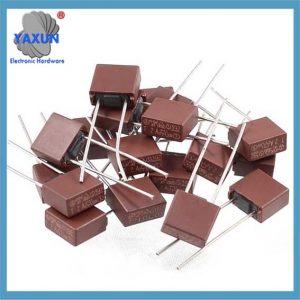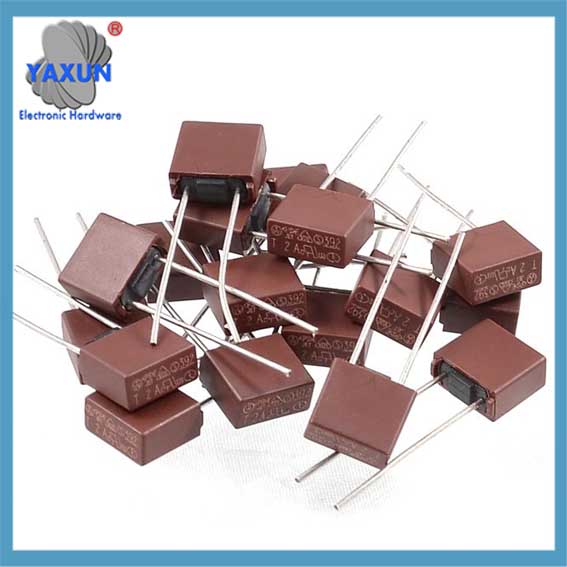製品カテゴリ
- サーマルサーキットブレーカー 20
- ヒューズボックスホルダー 36
- 温度センサー 67
- サーマルスイッチ 64
- カーヒューズ 19
- ボルトダウンヒューズ 7
- 温度ヒューズ 32
- 表面実装ヒューズ 12
- サーミスター 22
- PCB マウント ヒューズ ホルダー 27
- ワイヤハーネス 6
- ブレードヒューズホルダー 17
- サーモスタット 46
- 電気ヒューズ 14
製品タグ
黒 / レッドスクエア型タイムラグマイクロDIP実装ミニチュアヒューズ
Black Red Square Type Slow Blow Radial Lead DIP Micro Fuses
Description Of Square Type Slow Blow Radial Lead Micro Fuses:
定格電圧: 250V
材料: Base and Cap: Black thermoplastic, Pin: Tin-lead Plated alloy
証明書 : CUL、UL
AC Adapter Current:2.5 アンプ
ブランド:Baomain
電圧:250 Volts
材料:lead
仕様:Met UL
About this item
製品名 : Micro Fuse; リードの種類 : 放射状の
定格電力 : 250V, 2.5あ (T2.5A); 破壊能力 : 50あ (250交流電圧); Time-lag : 2.5あ
本体サイズ : 8 × 7 x 4mm/ 0.31″ x 0.27″ x 0.16″(L*W*T)
Leads Size : 0.5 x 19mm/ 0.2″ x 0.75″ (ディ*ル)
重さ : 10g; Package Content : 20 x Micro Fuse
 DIP Mounted Miniature Cylinder Slow Blow Micro Fuse 250V Red |
 uxcell 角型 スローブロー ラジアルリード マイクロヒューズ 電子部品 PCB LCD 修理交換用 |
 黒 / 赤四角型タイムラグマイクロDIPヒューズ |
① DIP Mounted Miniature Square can be divided into square type miniature fuse and cylindrical type miniature fuse according to shape, with sizes of 8*8*4mm, 8.5*8んん, 8.5*8*4mm respectively; current range from 50mA-6.3A 125V/250V;;
Models include: AR5\AP5\AMF\AF\372\382\370\392\2000\2010\MEF\MET\MSF\MST, 等.
② DIP Mounted Miniature Square can be divided into fast blow and slow blow according to fuse performance.
③ According to standards, it can be divided into American and European standards, and the certifications obtained are: UL\VDE\SEMKO\CUL\CCC\EK\PSE, 等.
The influence of working environment temperature on fuse life:
Excessive ambient temperature will damage the life of the fuse. For time-delay (slow-blow) fuses such as tin ball type, tin begins to diffuse into the metal wire when the temperature is about 160℃ (150~170℃). The temperature at which the fusible element (metal wire) of the fast-blow fuse begins to oxidize more violently is about 200℃ (175~225℃). With the oxidation of the fuse from the outside to the inside, multiple diffusions, thermal stress fatigue, 等, the life of the fuse will gradually shorten. したがって, it is recommended that the time-delay fuse should not work for a long time above 150℃, and the fast-blow fuse should not work for a long time above 175~225℃.
The influence of pulse current on the life of the fuse:
Continuous pulse impact will produce thermal cycles, which will cause diffusion, oxidation, thermal stress, 等. of the fuse, and even accelerate it. The fuse will gradually age with the increase of pulse energy and number of times. The impact resistance life of the fuse depends on the percentage of the pulse I2t to the fuse’s own I2t. 通常, it should be less than 20[%], so that the fuse can withstand more than 100,000 impacts.
Such as the pipe clamp in contact with the fuse, and the length and cross-sectional area of the connecting wire. The contact resistance between the fuse and the pipe clamp is large, which is detrimental to the life. The UL standard stipulates that the contact resistance between the fuse and the pipe clamp is less than 3mΩ during the test. When the contact resistance is large, the pipe clamp does not dissipate heat but generates heat and transmits it to the fuse.

Size Of MTS 8X4mm Time Lag Radial Lead Micro Fuses
お問い合わせ
メールを待っています, 以内に返信させていただきます 12 必要な貴重な情報を何時間も入手できる.
 English
English العربية
العربية Български
Български 粤语
粤语 中文(简体)
中文(简体) 中文(漢字)
中文(漢字) Nederlands
Nederlands Suomi
Suomi Français
Français Deutsch
Deutsch Ελληνικά
Ελληνικά Magyar
Magyar Italiano
Italiano 日本語
日本語 한국어
한국어 Polski
Polski Português
Português Română
Română Русский
Русский Slovenščina
Slovenščina Español
Español Svenska
Svenska ภาษาไทย
ภาษาไทย Türkçe
Türkçe Tiếng Việt
Tiếng Việt



